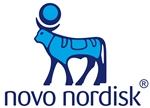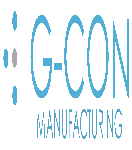Day 20 :
- Track 12: Parenteral Nutrition and Admixture
Track 13: Drug Development and Designing
Track 14: Drug Discovery
Session Introduction
Robin Hwang
ICP Consulting Corp, USA
Title: The First Integrated Plastic PreFilled Safety Syringe

Biography:
Robin has completed his PhD from UMASS-Amherst and MS from IIT. He has been consulting specializing in injectable combination products since 2010 (e.g., PFS and autoinjector). He previously was a Vice President at Halozyme and a Director at Amgen who led the development and commercialization of three SureClick™ combination products - Aranesp®, Neulasta®, and Enbrel®. Before Amgen, Robin served as a Sr. Project Engineer at Becton Dickinson Research Center and focused on various process and product development of medical devices as well as protein delivery. Prior to BD, Robin worked at GE Plastics in resin and fabrication process development. (Up to 100 words)
Abstract:
PFS has many benefits but comes with the risk of needle-stick injury on its own. With the trend of global needle-stick legislation, most drug products in PFS require sharp protection devices driven by safety concerns and regulatory mandates. While the approach for making syringes safe continues to be dominated by add-on needle cover devices, integrated prefilled safety syringes (in glass and plastic) are now being developed. MCI’s MySafety Syringe is an user-activated, automatic needle-retraction safety syringe. At the end of injection, by pushing the collapsible plunger rod, the used needle retracts and is sequestered inside the syringe barrel. MySafety Syringes are already commercialized as empty PP syringes (in 1cc and 3cc) and are turned into an integrated plastic prefilled safety syringe (iPPFSS) in nested tub with COC and COP differentiated by its simple design and container closure system. iPPFSS (aka MySafill syringe) takes advantage of material design flexibility, eliminates glass breakage and provides a great life cycle management tool for drug products in PFS. It could ensure the quality of syringes before fill and would not waste the precious drugs due to assembly process which could occasionally happen to the add-on devices. Its compact design saves costs in cold storage space, transportation and waste disposable. The design of MySafill Syringe is different from all the safety syringes in the market (or under development) and is much easier to industrialize as already demonstrated by the commercialized empty PP syringes. Work is under way to demonstrate drug product compatibility with MySafill Syringes.
Neervalur V Raghavan
RAGS PHARMA CONSULTING, LLC. USA
Title: Systematic approach to development of aqueous drug formulation and drug device combination injectable products and challenges

Biography:
Dr. Neervalur Raghavan is an experienced leader of R&D organizations that have successfully developed novel formulations and implemented practical manufacturing solutions for drug entities that have poor solubility and limited shelflife. Provided key leadership to drive strategic business initiatives, longterm process optimization activities and the technical development of a scientific staff that is known throughout the industry. Responsible for developing over 200 product presentations that include novel frozen drug formulations, inhalation therapy products, sterile, readytouse injectable antibiotic solutions and aseptic formfillseal injectable products. Organizations under leadership were responsible for more than 150 patents and innovations for products that continue to save millions of lives each year and generate an annual GP of over $100 million (parental products) or related business that drives strategic initiatives, including new product development, longterm process/optimization activities, quality assurance, while ensuring all objectives are met and meet product safety and quality requirements. He has earned a Ph.D degree in chemistry from University of Southern California, Los Angeles. After serving as a postdoctoral fellow at Ohio State University, he joined University of Notre Dame focusing on radiation chemistry of low levels of aromatic aqueous solutions , utilizing HPLC and fast reaction kinetics. Then he joined Baxter Health Care Corporation and served there over thirty years , with increased responsibility, on sterile drug product development . He retired as VP of Pharmaceutical Product Development R&D. He had active membership with AAPS and ACS
Abstract:
The topic will cover fundamental aspects of development of aqueous injectable products ranging from small to large molecules. Emphasis will be placed on approaches to meet safety and stability to meet global regulatory considerations and market needs. In addition, particular challenges from formulation,analytical, and processing perspectives that are typically experienced in the development of drug device combo products and how to anticipate and to overcome them with carefully designed and systematic approaches during product development phase will also be discussed. A brief review of the challenges to the development of aqueous parental drug formulations will also be presented.
Dipesh Shah
Catalent Pharma Solutions, USA
Title: Compatibility Assessment of a Model Monoclonal Antibody Formulation in Glass and in Blow-Fill-Seal (BFS) Plastic Vial delivery formats

Biography:
Dipesh Shah, Ph.D. is Senior Development Engineer at Catalent Pharma Solutions, 2210 Lake Shore Drive, Woodstock, IL 60098; Tel: 1-815-206-1220; email: dipesh.shah@catalent.com. Dipesh Shah received his Ph.D. in Pharmaceutical Sciences from University of Missouri-Kansas City in 1998. Dipesh Shah has seventeen years of experience in development of parenteral and oral formulations and supported global CMC regulatory submissions and commercial launch of globally approved products.
Abstract:
The purpose of this study was to compare he compatibility of a model monoclonal antibody (mAb) formulation in glass and in AdvaseptTM BFS stoppered plastic vials. The biotechnology industry has expressed a strong interest in the use of plastic vials to reduce or eliminate problems associated with glass vials such as protein-surface interactions, vial breakage and glass delamination. In addition, the use of plastics can enable drug manufacturers to produce flexible primary container designs and leverage BFS automated advanced aseptic filling techniques. However, the selection of an appropriate BFS-derived plastic vial compatible with protein therapeutics requires knowledge of the vial’s component chemistry, BFS process and its impact on protein safety and efficacy. This study evaluated the compatibility of a model mAb formulation in glass and compared it to AdvaseptTM vials incorporating uncoated stoppers. The studies evaluated protein potency (UV, activity), protein stability (SEC, SDS-PAGE, cIEF, NTA and Peptide Mapping) and leachables (GC-MS, GC-FID, HPLC-UV and ICP-MS) in glass and in AdvaseptTM vials over long-term storage under refrigerated conditions (5°C). Results indicate that the mAb’s stability was comparable in both primary container systems.
Claudia Mueller
F Hoffmann La Roche, Switzerland
Title: Development of co-formulations of monoclonal antibodies and recombinant human hyaluronidase (rHuPH20)

Biography:
Abstract:
For patients, subcutaneous (SC) administration represents a convenient alternative to i.v. infusion. However, SC application faces limitations with regards to the drug volume that can be administered. To enable delivery of the necessary doses, increase in the concentration of the drug and/ or temporary enlargement of the interstitial space at the injection site, e.g. by using recombinant human hyaluronidase (rHuPH20), are potential strategies to face this challenge. This presentation highlights the technical development approaches used at Roche for the drug product development of co-formulations consisting of concentrated monoclonal antibodies and rHuPH20. The presentation will focus on particular challenges for formulation and process development arising from combination of two very different proteins in order to maintain both stable and active within one formulation.
Gabriele Peron
Stevanato Group, Italy
Title: Shaping pharma manufacturing facility design through a ready to fill primary packaging solution

Biography:
Abstract:
Industry trends toward time to market and smaller batch sizes make new investment in large sterile manufacturing facilities difficult to justify. Production spaces need design that incorporate the flexibility required for the new business models. Concurrently, facility aging combined with increasingly challenging GMP requirements are driving the need for new technologies. These technologies include single-use product contact components, presterilized container/closures and increased use of robotics in processing. The integration of engineering design, business needs and supplier technologies will help the next generation of sterile manufacturing facilities. At the same time, there is a clear need to increase sterility assurance levels, increase productivity and get a faster access to market, with reduced investments as urgent priorities. This paper illustrates the direct impact on pharma manufacturing facility design due to the adoption of technologies based on the concept of ready to use platform.
- Track 3: Safeguard of Injectables and Leachables
Track 4: Manufacturing Considerations in Delivery devices
Track 13: Drug Development and Designing
Session Introduction
Panayiotis P Constantinides
Biopharmaceutical & Drug Delivery Consulting, LLC, USA
Title: Parenteral Drug Nanodispersions : Manufacturing, Characterization and In Vitro/In Vivo Performance Evaluation

Biography:
Dr. Panayiotis (Panos) P. Constantinides is the President of Biopharmaceutical & Drug Delivery Consulting, LLC and Affi liated Professor of Biopharmaceutical Sciences at Roosevelt University, College of Pharmacy in Schaumburg, Illinois, with 25 years of experience in drug delivery and pharmaceutical development. He received a University Diploma in Chemistry from Athens University in 1977 and PhD in Biochemistry from Brown University in 1983. He was a postdoctoral fellow in the Pharmacology Department and Associate Research Scientist in the Comprehensive Cancer Center of Yale University School of Medicine (1983-1987). Past industrial positions held included: Vice President of R&D with DOR Biopharma and Morton Grove Pharmaceuticals (2001-2004), Director of Research at SONUS Pharmaceuticals (1997-2000) and from 1987 to 1997 a number of R&D positions of increasing responsibilities with LipoGen, SmithKline Beecham Pharmaceuticals and Abbott Laboratories. In addition, he serves as scientifi c advisor in early stage companies and contract research organizations. He has held adjunct faculty appointments with the Pharmaceutics Department of Washington University in Seattle, WA and the Department of Biochemistry of the University of Tennessee, in Knoxville, TN. He is inventor in 33 patents and patent applications, has authored more than 130 publications and has been invited speaker at many national and international conferences, biotech/pharma companies and universities. Dr. Constantinides is AAPS Fellow, current Chair of the AAPS Formulation Design and Development (FDD) Section and Past Chair of the Lipid-Based Drug Delivery Systems and the Nanotechnology Focus Groups.
Abstract:
There have been major advances and achievements in the use of nanoparticles for parenteral drug delivery and targeting especially for cancer drugs and biologics. Of particular interest are drug nanodispersions and include, liposomes, nanoemulsions, solid lipid nanoparticles, polymeric micelles, dendrimers, nanocrystals and nanosuspensions. Directing therapeutics to intracellular targets and selectively killing disease cells is the primary driving force behind the rapid evolution of nanoparticle-based approaches. A brief overview of nanoparticle design, manufacturing, characterization and in vitro/in vivo assessment, including Quality-by-Design (QbD) aspects, will be discussed during the first part of the talk. Case studies will then be presented with parenteral small molecules, approved drugs or New Molecular Entities (NMEs) employing nanoemulsions, liposomes, polymeric micelles and solid lipid nanoparticles. Improvements in the manufacturing methods and better understanding of the factors controlling stability will certainly expand the use of nanodispersions in parenteral drug
Jianfeng Hong
Fresenius Kabi, USA
Title: Extractable and leachable studies of parenteral infusion and transfusion products

Biography:
Jianfeng Hong is a Senior Research Scientist and the Manager of the Analytical Chemistry laboratory at Lake Zurich, Illinois of Fresenius Kabi USA LLC. His major responsibilities include leading a group of analytical chemists to perform extractable and leachable testings, as parts of biocompatibility studies for material characterizations, for transfusion and infusion products of blood and pharmaceuticals of Fresenius Kabi. His group uses a wide variety of advanced analytical instrumentation including GC/ MS, UPLC/UV, Q-TOF mass spectrometer with accurate mass capability, ICP and TOC. He has over eighteen year experience as an analytical chemist with pharmaceutical and medical device industries. He earned a Master’s degree in Analytical Chemistry from University of Louisville, Kentucky, USA.
Abstract:
This presentation will describe the general extractable/ leachable study practices of parenteral infusion and transfusion products. It will include (1) extractable and leachable study designs and extractable/leachable study work flows using a wide variety of analytical techniques (UPLC/UV/MS, GC/MS, ICP and TOC). (2) The determinations of concentration thresholds for extractable and leachable that require identification and quantification (3) risk assessments of the extractable and leachable compounds and (4). Selection and analytical method development/validation is carried out for target leachable compounds that are monitored for the stability evaluation of infusion and transfusion products.
Neervalur V Raghavan
Rags Pharma Consulting, LLC, USA
Title: Systematic approach to development of aqueous drug formulation and drug device combination injectable products and challenges

Biography:
Neervalur V Raghavan is an experienced leader of R&D organizations that have successfully developed novel formulations and implemented practical manufacturing solutions for drug entities that have poor solubility and limited shelf life. He has provided key leadership to drive strategic business initiatives, long term process optimization activities and the technical development of a scientifi c staff that is known throughout the industry. He is responsible for developing over 200 product presentations that include novel frozen drug formulations, inhalation therapy products, sterile, ready to use injectable antibiotic solutions and aseptic form fill seal injectable products. He has earned a PhD degree in Chemistry from University of Southern California, Los Angeles. After serving as a Postdoctoral fellow at Ohio State University, he joined University of Notre Dame focusing on radiation chemistry of low levels of aromatic aqueous solutions, utilizing HPLC and fast reaction kinetics. Then he joined Baxter Health Care Corporation and served there over thirty years, with increased responsibility, on sterile drug product development. He retired as VP of Pharmaceutical Product Development R&D. He had active membership with AAPS and ACS.
Abstract:
The topic will cover fundamental aspects of development of aqueous injectable products ranging from small to large molecules. Emphasis will be placed on approaches to meet safety and stability to meet global regulatory considerations and market needs. In addition, particular challenges from formulation, analytical, and processing perspectives that are typically experienced in the development of drug device combo products and how to anticipate and to overcome them with carefully designed and systematic approaches during product development phase will also be discussed. A brief review of the challenges to the development of aqueous parental drug formulations will also be presented.
Claudia Mueller
F. Hoffmann-La Roche Ltd., Switzerland
Title: Development of co-formulations of monoclonal antibodies and recombinant human hyaluronidase (rHuPH20)

Biography:
13 years experience in Clinical Drug Development phase I-III; clinical study design, protocol and CRF development, SMT lead, clinical trials
Abstract:
For patients, subcutaneous (SC) administration represents a convenient alternative to i.v. infusion. However, SC application faces limitations with regards to the drug volume that can be administered. To enable delivery of the necessary doses, increase in the concentration of the drug and/ or temporary enlargement of the interstitial space at the injection site, e.g. by using recombinant human hyaluronidase (rHuPH20), are potential strategies to face this challenge. This presentation highlights the technical development approaches used at Roche for the drug product development of co-formulations consisting of concentrated monoclonal antibodies and rHuPH20. The presentation will focus on particular challenges for formulation and process development arising from combination of two very different proteins in order to maintain both stable and active within one formulation

Biography:
Josh Russell, the Life Sciences Product Manager at AST is a leading industry advocate for adaptive manufacturing strategies and technologies that address production and quality challenges faced within the biopharma industry. He has been a frequent speaker, author and contributor of technical articles discussing market trends of parenteral processing and discussing advanced aseptic processing technologies such as; pre-sterilized single-use disposables and containers, and robotic automation with isolator-barrier systems. As Product Manager, he works with AST’s engineering, process and controls experts, along with industry partners to provide solutions to aseptic manufacturing challenges. He holds a Bachelor of Science degree in Mechanical Engineering from Saint Martin’s University and has over ten years’ experience in drug substance and drug product manufacturing.
Abstract:
With the biopharma industry focus on producing biologic and protein based therapies the manufacturing paradigm is requiring a shift from dedicated high volume manufacturing strategy to one that requires flexibility to produce low volumes of high value products in multiple delivery systems. Technologies are emerging that provide not only a high degree of flexibility, but also provide a foundational manufacturing template that can be leveraged to reduce cost and risk. One of the key enabling technologies is the more recent introduction of ready-to-use vials and cartridges, which compliment well established pre-filled syringes options, allows manufacturers to adapt their current manufacturing mind-set to one that is more affordable and responsive to current and future pipelines. This presentation will discuss the key market trends associated with the manufacture of biotherapies, automated aseptic processing of pre-sterilized ready-to-use (RTU) containers (e.g. vials, syringes, and cartridges) on a modular manufacturing platform for these products, and experiential based recommendations for implementation of RTU formats in aseptic processes.
Dipesh Shah
Catalent Pharma Solutions, USA
Title: Compatibility assessment of a model monoclonal antibody formulation in glass and in blow-fi ll-seal (BFS) plastic vial delivery formats

Biography:
Dipesh Shah is a Senior Development Engineer at Catalent Pharma Solutions,USA. He received his PhD in Pharmaceutical Sciences from University of Missouri-Kansas City in 1998. He has seventeen years of experience in development of parenteral and oral formulations and supported global CMC regulatory submissions and commercial launch of globally approved products.
Abstract:
The purpose of this study was to compare he compatibility of a model monoclonal antibody (mAb) formulation in glass and in AdvaseptTM BFS stoppered plastic vials. Th e biotechnology industry has expressed a strong interest in the use of plastic vials to reduce or eliminate problems associated with glass vials such as protein-surface interactions, vial breakage and glass delamination. In addition, the use of plastics can enable drug manufacturers to produce flexible primary container designs and leverage BFS automated advanced aseptic filling techniques. However, the selection of an appropriate BFS-derived plastic vial compatible with protein therapeutics requires knowledge of the vial’s component chemistry, BFS process and its impact on protein safety and efficacy. This study evaluated the compatibility of a model mAb formulation in glass and compared it to AdvaseptTM vials incorporating uncoated stoppers. The studies evaluated protein potency (UV, activity), protein stability (SEC, SDS-PAGE, cIEF, NTA and Peptide Mapping) and leachables (GC-MS, GC-FID, HPLC-UV and ICP-MS) in glass and in AdvaseptTM vials over long-term storage under refrigerated conditions (5°C). Results indicate that the mAb’s stability was comparable in both primary container systems.
Li-Chun Tsou
Astra Zeneca Pharmaceuticals, USA
Title: Drug delivery device strategy for patient centric therapies

Biography:
Li-Chun Tsou is currently Global Devices Technical Director at Astra Zeneca where she oversees device operations quality for parenteral diabetic product portfolio. She has been working in biopharmaceutical companies for 20-years from design concept to commercial launch; she leads auto-injectors projects across functional groups and geographic boundaries to support cutting edge drug delivery device technology for patient-centric therapeutics
Abstract:
Parenteral devices have experienced many years of success and continue to be the main stream of fighting hard-to-treat diseases for patients. The strength of injectable drug delivery technology offers targeted treatment and self injection options enabling users to take control of their health. The threat which injectable devices have encountered in recent years is the arm race among biotech companies to develop oral medicine of Hep-C, insulin, anti-TNF, and GLP-1. The opportunity of wearable bolus injector designed for viscous biologics and protein drugs provides oncology patients new devices to reduce in-clinic visit. For answering humanitarian outcry in supplying life-saving drugs in developing countries, blow-fill-seal technology becomes feasible to balance drug supply and affordable price. Market landscape changes and regulatory environment demand prompt Pharmaceutical industry to understand that device innovation and manufacturability are keys to bring cutting edge devices for patients. Many elite gold-medal olympic athletes train themselves harsh as if they were number two. Many prominent Pharmaceutical companies develop new drugs at tremendous risks of cannibalizing their own existing products. They have vision if they do not innovate, their competitors will. In biotech field, maintaining current status is a sure sign to be outdated while everyone else is progressing.

Biography:
Raja Roy conducts research on technological change, innovation, and US competitiveness in the manufacturing of industrial products such as robotics, machine tools, and vision sensors. He earned his PhD in Strategic Management from the University of Pittsburgh. His research has been published in Strategic Management Journal, Research Policy, and Advances in Strategic Management. He holds an MBA in International Marketing from the Indian Institute of Foreign Trade, New Delhi, India and BE in Production Engineering from Jadavpur University, Kolkata, India. Prior to pursuing an academic career, he worked as Manager (Exports), Hindustan Unilever Ltd. and as Manager, Calcutta Electric Supply Corporation, Ltd.
Abstract:
We investigated how incumbent differences affect their response to a disruptive change and found that incumbents with access to in house knowledge that helps them understand “what to develop and design” and “how to do it,” are likely to be the leaders in matching the performance features in a disruptive product. We used the advent of machine tools with disruptive Computer Numerical Control (CNC) technology as the context and concentrated on the transition period when the machine tool demand was shifting from customized machine tools with mechanical controls to standardized machine tools with CNCs. We found that incumbents with access to in house users and broad pre-disruption component experience were the leaders in matching the agility of the disruptive products. Our findings suggest that the boundary conditions for the theory of disruption are more nuanced than what the literature predicts
- Track 1: Novelties in Pre-filled Syringe products
Track 5: Trends and Challenges in Formulation and Development
Track 9: Global Market Trends in Injectables and Parenterals
Track 10: Technical and Regulatory Challenges of Parenterals and Autoinjectors
Session Introduction
Gulay Yelken Demirel
Sanovel Pharmaceuticals, Turkey
Title: Challenges in parenteral formulation development studies and an evaluation from QbD point of view

Biography:
Gulay Yelken Demirel has a degree in Department of Chemistry from University of Gazi (Ankara, Turkey) followed by a Master’s degree at Medicinal and Pharmaceutical Chemistry (faculty of pharmacy) from same university. She is also a Turkish Patent Attorney. She has nine years experience in R&D department of generic pharmaceutical companies. She worked as formulation scientist at the Pharmaceutical Technology Department of Nobel Pharmaceuticals.
Abstract:
Parenteral dosage forms differ from all other pharmaceutical dosage forms, because they are injected directly into body tissue through the primary protective systems of the human body; the skin and mucous membranes. They have many advantages like routes of administration, elimination of first pass effect, better absorption. They can be in a solution, suspension, emulsions, dry powders with freeze drying as well as microcapsules, nanoparticules or micro emulsions. But there are some limitations for formulation development studies like drug stability, poor solubility, packaging, controlling the quality of these unique products, sterilization methods, evaluation of parenteral dosage forms issues. So, What are the main formulation development steps for a new parenteral drug products? And what about QbD development approach for parenteral dosage forms? Parenteral dosage forms represent excellent opportunities for life cycle management to the pharmaceutical companies. What about the future of parenteral dosage forms formulations? Sustained release drug delivery, such as depot formulations which are already available at the market, may be a good alternative.

Biography:
Diane Paskiet has over twenty years of experience in packaging analysis. She has served as a project advisor in support of qualification studies associated with drug containment systems for regulatory fi lings. Her current responsibilities include coordination of study plans for technical support of packaging components and R&D. Previous to this role she was in charge of site operations for West-Monarch Analytical Laboratories. She is serving a five year term on the United States Pharmacopeia (USP) Packaging, Storage and Distribution Expert Committee and a co-recipient of the USP award for Innovative Response to a Public Health Challenge. She is Chair of the PQRI Parenteral and Ophthalmic Drug Product (PODP) Leachables and Extractables Working Group and a faculty member of the PDA Training Institute, as well as author/co-author of papers on the subject of pharmaceutical packaging
Abstract:
The Product Quality Research Institute (PQRI) is a non-profi t consortium involving industry organizations, academia and regulatory agencies that together provide recommendations in support of regulatory guidance to advance drug product quality. The collaborative activities of the PQRI Leachables and Extractable Working Group resulted in a systematic and science-based approach to identify and qualify leachables, including the concept of safety thresholds. Concepts from this widely accepted approach were formally publicized in 2006 for Orally Inhaled and Nasal Drug Products (OINDP) and are being extrapolated to parenteral and ophthalmic drug products (PODP). Chemist and Toxicologist are working together to generate and share data to demonstrate these same principles for parenteral dosage forms. The PODP recommendations consider factors associated with dose, duration, patient populations, and other product/user attributes. The recommendations for thresholds and best practices for PODP are currently being drafted. This presentation will give background on leachables and extractables from packaging materials and describe risk based approaches for qualifying leachables in parenteral drug products based on PQRI recommendations.
Bill Hartzel
Catalent Pharma Solutions, USA
Title: Addressing the market demands of parenterals through innovation and risk mitigation that drives reliable supply

Biography:
Bill Hartzel is the Director of Strategic Execution at Catalent Pharma Solutions, a global leader in development solutions and advanced drug delivery technologies. In this role, he is responsible for the implementation of a full suite of advanced aseptic processing solutions for biologic and complex pharmaceutical liquid products. He provides a strong background in advanced aseptic processing in blow/fi ll/seal and plastics in which he has numerous publications and presentations on the topics. Additionally, he has been a leader in the single use “disposables” industry since 2006 for his background in materials of construction. He is on the Board of Directors for BPSA, a Technical Author for PDA –TR 66 on Single Use Manufacturing, and the former Chairman of the ASME BPE Task Group for Single Use. He has an undergraduate degree in Chemical Engineering and an MBA from Villanova University
Abstract:
This presentation will focus on the use of the advanced aseptic filling techniques utilized in blow/fill/seal technology to create a glass-free injectable platform for biologics. It will provide details on how the principles of QbD are leveraged in the equipment and process design to dramatically reduce the risk profile and particulate contamination in parenteral filling through control and automation. In addition, the presentation will provide a case study of a model mAb and its compatibility with the BFS vial compared to glass.
Jim Polarine
STERIS Corporation, USA
Title: Case studies of human fl ora and spore contamination in clean rooms

Biography:
Jim Polarine is a technical service manager at STERIS Corporation. He has been with STERIS Corporation for over fourteen years. His current technical focus is microbial control in cleanrooms and other critical environments. He has lectured in North America, Europe, Asia, and Latin America on issues related to cleaning and disinfection in cleanrooms. He is a frequent industry speaker and published several PDA book chapters and articles related to cleaning and disinfection and contamination control. He is currently co-authoring articles. He is active on the PDA task force on cleaning and disinfection and the PDA task force on Microbial Deviations and a co-author on the technical reports. He is a member of the PDA’s Environmental Monitoring Group, Contamination Control Group, and Biotech Interest Group
Abstract:
Staying ahead of the curve in regard to Environmental Monitoring requires an understanding and an anticipation of the constantly changing microbial climate of the pharmaceutical manufacturing process. Knowing the characteristics of the environments in that process provides the benefit of allowing us to predict and solve potential future microbial control issues. This session will discuss pathways to use the data obtained from environmental monitoring to provide proactive and practical solutions for comprehending and managing everyday pharmaceutical microbiology challenges. The start-up and control of cleanroom facilities will also be covered as well as meeting regulatory expectations. This presentation will cover case studies on human flora and spore contamination in clean room operations. Solutions will be discussed to proactively present future contamination issues. The seminar will cover the most common causes of contamination: Operators, items brought into the cleanroom, and degradation of the cleanroom over time. Case studies in operator borne contamination will be discussed as well as preventative long term solutions. Specific examples of aerobic and anaerobic vegetative bacteria will be highlighted and analyzed. Items brought into cleanrooms that can harbor fungal and bacterial spores will be discussed as well as specific case studies highlighting examples where sources were items brought into the cleanroom or in some cases other common causes. Fungal and bacterial spore structures as well as efficacy testing and specific test conditions will be briefly discussed. Solutions will be presented to prevent effi cacy testing failures due to test method, recovery, and coupon porosity issues. Targeted long term solutions will be discussed regarding the spore case studies in a concerted eff ort to limit reoccurrences. The overall objective and scope of this seminar will be to discuss specific cases studies that have occurred in my years of experience in the industry. Specific and precision long term solutions will be conveyed to prevent reoccurrences and yield higher levels of control in the cleanroom operations.
Maik W Jornitz
G-Con Manufacturing Inc., USA
Title: The review of fl exible production platforms for pharma/biopharmaceutical processing

Biography:
Maik W Jornitz is a former PDA Board member (Chair of the Board of Directors) and currently a member of the PDA Science Advisory Board (SAB), Audit Committee and co-chair of the Aging Facility Task Force. He is also member of ISPE, ASTM, ASME, a multitude of editorial advisory boards, Science Advisory Board of Artemes and Biotechnology Industry Council. As a faculty member of various training organizations, especially PDA TRI, he trains industry and regulators on a frequent basis. Maik has close to 30 years’ experience in filtration, purification, single-use and flexible facility technologies, embracing the related regulations and validation requirements
Abstract:
A major question arising in drug development, is it better to invest or to outsource, when to invest and how to ramp up production capacity? All these questions are posted with the uncertainty whether the drug target will be successful or not. Therefore the main aim within the drug development cycle is financial risk mitigation, which often results in outsourcing. The major financial burdens is capital expenses, invested into rigid production facilities, which are often only designed to facilitate one product, are very inflexible in regard to scaling-up and -down, are unable to be divested if the drug target fails and are immovable. The predicament of investment versus financial risk mitigation was a major for start-up companies, but nowadays affect as much large biopharma. Furthermore, the product portfolio of the industry is changing from large volume multi-patient treatments to low volume individual patient treatment. Production site design flexibility is becoming a key element, so much that plug and play options are required. The paper will present such plug and play options, production process platforms, which can be employed fast track and with high degree of flexibility. It will scrutinize the options and the feature and benefits of new modular designs, which can be assembled to entire processes or kept as unit operation. Example cases of such modular site designs will be exposed.
Carsten Worsoe
Novo Nordisk, Denmark
Title: The value of the “simulated study†as a tool to predict actual leachables in parenteral drug products

Biography:
Carsten Worsøe has a background in analytical chemistry and graduated from University of Copenhagen in 1998. Since then he has been employed at Novo Nordisk as a principal scientist in an analytical R&D department at Novo Nordisk. During his 16 years at Novo Nordisk, his main responsibility has been to develop analytical methods for Leachables and Extractables (L&E) test procedures of new container closure systems and devices under development. Within Novo Nordisk, he has been one of the important person to bring relevant people in packaging materials, toxicology, formulation, regulatory and analytical chemistry together to perform risk assessments and strategies for E&L testing in development and supply projects within parenteral delivery (prefilled cartridges, prefilled syringes and pump infusion systems etc.).
Abstract:
Health authorities are expecting data for Leachables throughout the shelf life and in-use period of a parenteral drug product. Extractable testing is often considered a prerequisite for leachable testing. For parenteral drug products having complex drug product formulations a gap exist between extractables and leachables’ testing. This gap can be closed with the use of the simulated study. The Product Quality Research Institute (PQRI) is currently developing recommendation and best practices for extractable and leachable documentation for Parenteral and Opthalmic Drug Products (PODP’s). The recommendation describes the “simulated” study as a tool to predict actual leachables in the final PODP product at an early drug development phase and thereby reducing the risk for having critical leachables at a late drug development phase. The presentation will describe the simulated study as the optimal study to predict actual leachables in different parenteral drug products including cartridges, vials and prefilled syringes and how it can be used to reduce the risk for having critical leachables and reactions between leachables and formulation components or the active ingredient at a late drug development phase. The presentation will also describe a number of different opportunities on how to perform simulated studies and finally a number of cases will be presented showing the value of the simulated study.
Edward C Tidswell
Baxter Healthcare Corporation, USA
Title: Global implementation of system-based microbial control for parenteral manufacture

Biography:
Edward C Tidswell, BSc, PhD - Dr. Tidswell is a Quality Director for Baxter Healthcare; located north of Chicago, IL (USA). Within his role he supports more than 40 facilities setting strategy and tactical activities across the entire breadth of microbiological control, cleanroom control and sterility assurance. More specifically assuring process and product control through implementation of new systems-based process for sterile and aseptic manufacture for parenterals and medical devices. He has worked within bulk active pharmaceutical ingredient, vaccine and parenteral manufacturing operations for human health and animal health products in both technical and validation roles for the likes of Eli Lilly and Evans Vaccines. Dr Tidswell continues to actively publish and is a leading authority on risk, aseptic and sterile manufacture. In 2004 he received the Parenteral Society’s George Sykes Memorial Award for his contribution to pharmaceutical risk assessment. As a microbial physiologist Dr Tidswell retains an active interest in several areas of microbiology, which include: bacterial adhesion, quorum sensing, viability, anaerobes, and rapid microbial technologies. From 1995-2010 he has served on the Editorial Boards of Letters in Applied Microbiology and The Journal of Applied Microbiology. In June 2010 Dr Tidswell joined the USP expert committee on Microbiology & Sterility Assurance. In 2013 Dr Tidswell joined the PDA’s Science Advisory Board.
Abstract:
Parenteral manufacture has and always will experience microbiological risks in the provision of large quantities of safe therapies. This industry sector is facing acute regulatory, economic and legal challenges warranting a change in paradigm for the manufacture and microbial control of both large and small volume Parenterals. Growing diversity of patient and therapeutic needs necessitates innovations in terms of marketed product and manufacturing processes. Legal infrastructure coupled with novel and changing manufactured products means that each facility will possess a unique risk profile. The relentless need to sustain and grow technical competency in tandem with expedient and exact manufacturing control demands that commensurate with risk profile is best served by ‘system-based microbial control’. System-based microbial control is a self-identifying and self-correcting process constructed from collective sub-systems, process controls, mechanisms which operate cohesively within an organization’s Quality Management System. System-based microbial control is the systematic and logic driven management process for the control of microbial hazards and risks during the drugs’ and devices’ manufacturing life-cycle assuring the provision of products meeting specifications. In a future in which manufacturing firms and regulatory agencies partner to focus on the provision of drugs and patient safety, an understanding of risk profiles, science and engineering-based logic and system-based control will be paramount. System-based microbial control within the frame work of a firm’s Quality Management System will be described with detailed examples of tools that are the core to an efficient system, coupled with recent learnings on global implementation.
Ben Nelson
Pfanstiehl, Inc., USA
Title: Purity, endotoxin level, and trace metal comparison of different grades of trehalose

Biography:
Ben Nelson has a PhD in Pharmaceutical Chemistry from the University of Kansas and a Master’s Degree in Physical Chemistry from the University of South Dakota. He has more than 10 years of combined academic and industrial pharmaceutical formulation experience, working extensively with both biotech and small molecule products. Currently Dr. Nelson is Formulation Solutions Manager at Pfanstiehl, a manufacturer of pharmaceutical excipients and high potency APIs of the highest quality.
Abstract:
Trehalose is a non-reducing disaccharide consisting of two glucose molecules linked by an α, α–1,1 bond. There are several properties of trehalose which make it an excellent choice for the stabilization of pharmaceutical formulations. The glass transition temperature is between 110 and 120°C, which is the highest of the disaccharides. Trehalose has 8 equatorial OH groups facilitating its inclusion into water clusters of relatively small size. It does not exhibit configurational changes caused by intramolecular hydrogen bonds like other sugars. The glycosidic bond of trehalose is <1 kcal/mol, in comparison, the sucrose glycosidic bond free energy = 27 kcal/mol. Th is low free energy bond is much less susceptible to hydrolysis, preventing production of reducing sugars. This work compares grades of trehalose with respect to purity, endotoxin levels, and trace metal content. Pfanstiehl Brand, High Purity Low Endotoxin Trehalose is used in the biopharmaceutical industry to stabilize proteins, lipids, and carbohydrates throughout the formulation and freeze/thaw life cycle of therapeutics. It is also widely applied as a key component in cryopreservation/freeze media to stabilize cell membranes and improve the recovery and robustness of cells used for bioproduction and cell therapy. The stabilizing benefi ts of trehalose include but are not limited to: Monoclonal Antibodies (mAbs), Fusion Proteins, Antibody Fragments (fAbs), Peptides, Stem cells, and Vaccines.

Biography:
Oliver Valet is one of the co-founders of rap.ID Particle Systems GmbH a company that develops manufactures and sells rapid particle identification systems. Within rap.ID, he is responsible for the product development and their worldwide marketing and sales. From the contract testing work performed at both rap.ID sites in Berlin and Princeton New Jersey, he has more than a decade experience in the field of industrial and environmental chemical analysis on particles. As an active member of the Respiratory Drug Delivery, RDD, the Royal Chemical Society, Parenteral Drug Association, PDA and American Association of Pharmaceutical Science, AAPS and the Apotekerverband, APV he has published his work continuously and presented in various conferences.
Abstract:
The optimization and control of lubrication processes either spray-on or baked-in, has become a highly regarded topic in pharma/ biotech discussions. Especially the formulations on protein basis demand for a high quality siliconization since those products are vulnerable and precious. Therefore, a thorough control and understanding of the siliconization process is crucial. This ensures product understanding and quality-by-design on the entire product life-cycle. It is necessary to guarantee a stable and smooth silicone layer to avoid rejects and product loss due to high break loose force or gliding forces. In pre-filled syringes, high silicone levels can also induce aggregation and inherent particle formation of the high concentrated proteins in formulation. Protein Based Therapeutics (PBT) may have strong interactions with the silicone oil used in Pre-Fillable Syringes (PFS). The control of those particles is also discussed by the recently updated USP <790>. We investigated this phenomenon by characterizing the silicone layer in siliconized PFS with baked-on, and low, high and very high concentrations of spray-on silicone oil. We have characterized the layer before and after a 4-week storage period by means of the Layer Explorer UT instrument. We investigated the relationship in sub-visible particle formation and silicone oil layer thickness and distribution as well as silicone oil layer stability parameter in PFS. We also investigated the interaction of those layers with a protein solution and observed the redistribution of the layer in accordance to the storage conditions. The formation of protein aggregates was chemically identified by means of image-directed micro – Raman, Single Particle Explorer ls raman.ID. To observe the formation of protein aggregates, the syringes were filled after storage with a protein formulation. 400 particles per sample were measured by means of automated Raman spectroscopy. Particle size distribution and chemical composition of the 300-500 individual particles per sample was obtained. A Raman library was built with the pure protein as well as from the protein mixed with different amounts of silicone. To study the presence of silicone droplets in-situ, 50 μl of sample was mounted in a specially designed wet-cell and 500 silicone droplets as well as protein aggregates were also chemically identified by means of image-directed Raman spectroscopy. We observed the redistribution of the silicone oil at 40 degree storage conditions after only a few days of storage. Also, we gathered that the orientation of the syringe during storage plays an important role on the distribution behaviour of the syringe. Further impact was visible when the differently stored syringes were filled and the amount of silicone droplets as well as protein aggregates were measured and controlled. A strong correlation between the layer homogeneity and the protein aggregation phenomena could be shown. From these results, we can conclude that the silicone oil layer in a pre-fillable syringe is prone to redistribution and reorientation. The dependence of protein aggregates and layer homogeneity shows that the control of the silicone oil layer homogeneity is an important factor in the quality of PFS. The design of the study could be used to determine product stability and PFS quality to assure the products quality over the entire life-cycle.
- Track 1: Novelties in Pre-filled Syringe products
Track 2: Parenteral vaccines
Track 3: Trends and Challenges in Formulation and Development
Track 4:Safeguard of Injectables and Leachables
Track 5: Advanced Parenteral Drug Delivery System in Clinical Disease Management
Track 6: Global Market Trends in Injectables and Parenterals
Session Introduction
Maik Jornitz
G-CON Manufacturing Inc., USA
Title: The Review of Flexible Production Platforms for Pharma/Biopharmaceutical Processing

Biography:
Maik W. Jornitz, President of G-CON Manufacturing Inc., is a distinguished industry leader with close to 30 years of experience in bioprocesses, especially sterilizing grade filtration and single-use technologies, including regulatory requirements, integrity testing, systems design, and optimization. Jornitz has published multiple books, book chapters and over 100 scientific papers. He is a member of the PDA Science Advisory Board, Marketing Advisory Baord and Audit Committee, as well as an advisory board member of Artemes Technologies, Biotechnology Industry Council and multiple science trade journals. He received his M.Eng. in Bioengineering at the University of Applied Sciences in Hamburg, Germany and accomplished the PED program at IMD Business School in Lausanne, Switzerland
Abstract:
A major questions arising in drug development, is it better to invest or to outsource, when to invest and how to ramp up production capacity? All these questions are posted with the uncertainty whether the drug target will be successful or not. Therefore the main aim within the drug development cycle is financial risk mitigation, which often results in outsourcing. The major financial burdens is capital expenses, invested into rigid production facilities, which are often only designed to facilitate one product, are very inflexible in regard to scaling-up and -down, are unable to be divested if the drug target fails and are immovable. The predicament of investment versus financial risk mitigation was a major for start-up companies, but nowadays affect as much large biopharma. Furthermore, the product portfolio of the industry is changing from large volume multi-patient treatments to low volume individual patient treatment. Production site design flexibility is becoming a key element, so much that plug and play options are required. The paper will present such plug and play options, production process platforms, which can be employed fast track and with high degree of flexibility. It will scrutinize the options and the feature and benefits of new modular designs, which can be assembled to entire processes or kept as unit operation. Example cases of such modular site designs will be exposed.
Jim Polarine
STERIS Corporation, USA
Title: Case Studies of Human Flora and Spore Contamination in Cleanrooms

Biography:
Jim Polarine is a technical service manager at STERIS Corporation. He has been with STERIS Corporation for over fourteen years. His current technical focus is microbial control in cleanrooms and other critical environments. He has lectured in North America, Europe, Asia, and Latin America on issues related to cleaning and disinfection in cleanrooms. Mr. Polarine is a frequent industry speaker and published several PDA book chapters and articles related to cleaning and disinfection and contamination control. He is currently co-authoring articles. He is active on the PDA task force on cleaning and disinfection and the PDA task force on Microbial Deviations and a co-author on the technical reports. He is a member of the PDA’s Environmental Monitoring Group, Contamination Control Group, and Biotech Interest Group.
Abstract:
Staying ahead of the curve in regard to Environmental Monitoring requires an understanding and an anticipation of the constantly changing microbial climate of the pharmaceutical manufacturing process. Knowing the characteristics of the environments in that process provides the benefit of allowing us to predict and solve potential future microbial control issues. This session will discuss pathways to use the data obtained from environmental monitoring to provide proactive and practical solutions for comprehending and managing everyday pharmaceutical microbiology challenges. The start up and control of cleanroom facilities will also be covered as well as meeting regulatory expectations. This presentation will cover case studies on human flora and spore contamination in clean room operations. Solutions will be discussed to proactively present future contamination issues. The seminar will cover the most common causes of contamination: Operators, items brought into the cleanroom, and degradation of the cleanroom over time. Case studies in operator borne contamination will be discussed as well as preventative long term solutions. Specific examples of aerobic and anaerobic vegetative bacteria will be highlighted and analyzed. Items brought into cleanrooms that can harbor fungal and bacterial spores will be discussed as well as specific case studies highlighting examples where sources were items brought into the cleanroom or in some cases other common causes. Fungal and bacterial spore structures as well as efficacy testing and specific test conditions will be briefly discussed. Solutions will be presented to prevent efficacy testing failures due to test method, recovery, and coupon porosity issues. Targeted long term solutions will be discussed regarding the spore case studies in a concerted effort to limit reoccurrences. The overall objective and scope of this seminar will be to discuss specific cases studies that have occurred in my years of experience in the industry. Specific and precision long term solutions will be conveyed to prevent reoccurrences and yield higher levels of control in the cleanroom operations.

Biography:
Paskiet has over twenty years of experience in packaging analysis. She has served as a project advisor in support of qualification studies associated with drug containment systems for regulatory filings. Her current responsibilities include coordination of study plans for technical support of packaging components and R&D. Previous to this role she was in charge of site operations for West-Monarch Analytical Laboratories. She is serving a five year term on the United States Pharmacopeia (USP) Packaging, Storage and Distribution Expert Committee and a co-recipient of the USP award for Innovative Response to a Public Health Challenge. She is Chair of the PQRI Parenteral and Ophthalmic Drug Product (PODP) Leachables and Extractables Working Group and a faculty member of the PDA Training Institute, as well as author/co-author of papers on the subject of pharmaceutical packaging.
Abstract:
The Product Quality Research Institute (PQRI) is a non-profit consortium involving industry organizations, academia and regulatory agencies that together provide recommendations in support of regulatory guidance to advance drug product quality. The collaborative activities of the PQRI Leachables and Extractables Working Group resulted in a systematic and science-based approach to identify and qualify leachables, including the concept of safety thresholds. Concepts from this widely accepted approach were formally publicized in 2006 for Orally Inhaled and Nasal Drug Products (OINDP) and are being extrapolated to parenteral and ophthalmic drug products (PODP). Chemist and Toxicologist are working together to generate and share data to demonstrate these same principles for parenteral dosage forms. The PODP recommendations consider factors associated with dose, duration, patient populations, and other product/user attributes. The recommendations for thresholds and best practices for PODP are currently being drafted. This presentation will give background on leachables and extractables from packaging materials and describe risk based approaches for qualifying leachables in parenteral drug products based on PQRI recommendations.
Ben Nelson
Formulation Solutions,Pfanstiehl, USA
Title: Purity, Endotoxin Level, and Trace Metal Comparison of Different Grades of Trehalose

Biography:
Ben Nelson has a PhD in Pharmaceutical Chemistry from the University of Kansas and a Master’s Degree in Physical Chemistry from the University of South Dakota. He has more than 10 years of combined academic and industrial pharmaceutical formulation experience, working extensively with both biotech and small molecule products. Currently Dr. Nelson is Formulation Solutions Manager at Pfanstiehl, a manufacturer of pharmaceutical excipients and high potency APIs of the highest quality.
Abstract:
Trehalose is a non-reducing disaccharide consisting of two glucose molecules linked by an α, α–1,1 bond. There are several properties of trehalose which make it an excellent choice for the stabilization of pharmaceutical formulations. The glass transition temperature is between 110 and 120°C, which is the highest of the disaccharides. Trehalose has 8 equatorial OH groups facilitating its inclusion into water clusters of relatively small size. It does not exhibit configurational changes caused by intramolecular hydrogen bonds like other sugars. The glycosidic bond of trehalose is <1 kcal/mol, in comparison, the sucrose glycosidic bond free energy = 27 kcal/mol. This low free energy bond is much less susceptible to hydrolysis, preventing production of reducing sugars. This work compares grades of trehalose with respect to purity, endotoxin levels, and trace metal content. Pfanstiehl Brand, High Purity Low Endotoxin Trehalose is used in the biopharmaceutical industry to stabilize proteins, lipids, and carbohydrates throughout the formulation and freeze/thaw life cycle of therapeutics. It is also widely applied as a key component in cryopreservation/freeze media to stabilize cell membranes and improve the recovery and robustness of cells used for bioproduction and cell therapy. The stabilizing benefits of trehalose include but are not limited to: Monoclonal Antibodies (mAbs), Fusion Proteins, Antibody Fragments (fAbs), Peptides, Stem cells, and Vaccines.
Jianfeng Hong
Fresenius Kabi, USA
Title: Extractable and Leachable Studies of Parenteral Infusion and Transfusion Products

Biography:
Jianfeng Hong is a Senior Research Scientist and the Manager of the Analytical Chemistry laboratory at Lake Zurich, Illinois of Fresenius Kabi USA LLC. His major responsibilities include leading a group of analytical chemists to perform extractable and leachable testings, as parts of biocompatibility studies for material characterizations, for transfusion and infusion products of blood and pharmaceuticals of Fresenius Kabi. His group uses a wide variety of advanced analytical instrumentation including GC/MS, UPLC/UV, Q-TOF mass spectrometer with accurate mass capability, ICP and TOC. He has over eighteen year experience as an analytical chemist with pharmaceutical and medical device industries. He earned a master degree in Analytical Chemistry from University of Louisville, Kentucky, USA.
Abstract:
This presentation will describe the general extractable/ leachable study practices of parenteral infusion and transfusion products. It will include (1) extractable and leachable study designs and extractable/leachable study work flows using a wide variety of analytical techniques (UPLC/UV/MS, GC/MS, ICP and TOC). (2) the determinations of concentration thresholds for extractable and leachable that require identification and quantification (3) risk assessments of the extractable and leachable compounds and (4). Selection and analytical method development / validation for target leachable compounds that are monitored for the stability evaluation of infusion and transfusion products.
Carsten Worsøe
Novo Nordisk, Denmark
Title: The value of the “simulated study†as a tool to predict actual leachables in parenteral drug products

Biography:
Carsten Worsøe has a background in analytical chemistry and graduated from University of Copenhagen in 1998. Since then he has been employed at Novo Nordisk as a principal scientist in an analytical R&D department at Novo Nordisk. During his 16 years at Novo Nordisk, his main responsibility has been to develop analytical methods for Leachables and Extractables (L&E) test procedures of new container closure systems and devices under development. Within Novo Nordisk, he has been one of the important person to bring relevant people in packaging materials, toxicology, formulation, regulatory and analytical chemistry together to perform risk assessments and strategies for E&L testing in development and supply projects within parenteral delivery (prefilled cartridges, prefilled syringes and pump infusion systems etc.).
Abstract:
Health authorities are expecting data for leachables throughout the shelf life and in-use period of a parenteral drug product. Extractable testing is often considered a prerequisite for leachable testing. For parenteral drug products having complex drug product formulations a gap exist between extractables and leachables’ testing. This gap can be closed with the use of the simulated study. The Product Quality Research Institute (PQRI) is currently developing recommendation and best practices for extractable and leachable documentation for Parenteral and Opthalmic Drug Products (PODP’s). The recommendation describes the “simulated†study as a tool to predict actual leachables in the final PODP product at an early drug development phase and thereby reducing the risk for having critical leachables at a late drug development phase. The presentation will describe the simulated study as the optimal study to predict actual leachables in different parenteral drug products including cartridges, vials and prefilled syringes and how it can be used to reduce the risk for having critical leachables and reactions between leachables and formulation components or the active ingredient at a late drug development phase. The presentation will also describe a number of different opportunities on how to perform simulated studies and finally a number of cases will be presented showing the value of the simulated study.
Gulay Yelken Demirel
Sanovel Pharmaceuticals, Turkey
Title: Challenges in parenteral formulation development studies and an evaluation from QbD point of view

Biography:
Gulay Yelken Demirel has degree in Department of Chemistry from University of Gazi (Ankara, Turkey) followed by a master degree at Medicinal and Pharmaceutical Chemistry (faculty of pharmacy) from same university. She is also a Turkish Patent Attorney. She has nine years experience in R&D department of generic pharmaceutical companies. She worked as formulation scientist at the Pharmaceutical Technology Department of Nobel Pharmaceuticals.
Abstract:
Parenteral dosage forms differ from all other pharmaceutical dosage forms, because they are injected directly into body tissue through the primary protective systems of the human body; the skin and mucous membranes. They have many advantages like routes of administration, elimination of first pass effect ,better absorption. They can be in a solution, suspension, emulsions, dry powders with freeze drying as well as microcapsules, nanoparticules or microemulsions. But there are some limitations for formulation development studies like drug stability, poor solubility, packaging, controlling the quality of these unique products, sterilization methods, evaluation of parenteral dosage forms issues. So, What are the main formulation development steps for a new parenteral drug products? And What about QbD development approach for parenteral dosage forms? Parenteral dosage forms represent excellent opportunities for life cycle management to the pharmaceutical companies. What about the future of parenteral dosage forms formulations? Sustained release drug delivery, such as depot formulations which are already available at the market, may be a good alternative.
Edward Tidswell
Baxter Healthcare Corporation, USA
Title: Global Implementation of System-Based Microbial Control For Parenteral Manufacture

Biography:
Edward C. Tidswell, BSc, PhD - Dr. Tidswell is a Quality Director for Baxter Healthcare; located north of Chicago, IL (USA). Within his role he supports more than 40 facilities setting strategy and tactical activities across the entire breadth of microbiological control, cleanroom control and sterility assurance. More specifically assuring process and product control through implementation of new systems-based process for sterile and aseptic manufacture for parenterals and medical devices. He has worked within bulk active pharmaceutical ingredient, vaccine and parenteral manufacturing operations for human health and animal health products in both technical and validation roles for the likes of Eli Lilly and Evans Vaccines. Dr Tidswell continues to actively publish and is a leading authority on risk, aseptic and sterile manufacture. In 2004 he received the Parenteral Society’s George Sykes Memorial Award for his contribution to pharmaceutical risk assessment. As a microbial physiologist Dr Tidswell retains an active interest in several areas of microbiology, which include: bacterial adhesion, quorum sensing, viability, anaerobes, and rapid microbial technologies. From 1995-2010 he has served on the Editorial Boards of Letters in Applied Microbiology and The Journal of Applied Microbiology. In June 2010 Dr Tidswell joined the USP expert committee on Microbiology & Sterility Assurance. In 2013 Dr Tidswell joined the PDA’s Science Advisory Board.
Abstract:
Parenteral manufacture has and always will experience microbiological risks in the provision of large quantities of safe therapies. This industry sector is facing acute regulatory, economic and legacy challenges warranting a change in paradigm for the manufacture and microbial control of both large and small volume parenterals. Growing diversity of patient and therapeutic needs necessitates innovations in terms of marketed product and manufacturing processes. Legacy infrastructure coupled with novel and changing manufactured products means that each facility will possess a unique risk profile. The relentless need to sustain and grow technical competency in tandem with expedient and exact manufacturing control demands commensurate with risk profile is best served by ‘system-based microbial control’. System-based microbial control is a self-identifying and self-correcting process constructed from collective sub-systems, process controls, mechanisms which operate cohesively within an organization’s Quality Management System. System-based microbial control is the systematic and logic driven management process for the control of microbial hazards and risks during the drug and device manufacturing life-cycle; assuring the provision of products meeting specifications. In a future in which manufacturing firms and regulatory agencies partner to focus on the provision of drugs and patient safety an understanding of risk profiles, science and engineering-based logic and system-based control will be paramount. System-based microbial control within the frame work of a firm’s Quality management System will be described with detailed examples of tools core to an efficient system, coupled with recent learnings on global implementation.
Ajit S. Narang
Bristol-Myers Squibb, Co. USA
Title: Protein Aggregation: New Investigative Tools and Emerging Mechanistic Understanding

Biography:
Ajit Narang works for the Drug Product Science & Technology Department of Bristol-Myers Squibb, Co. (BMS) in New Brunswick, NJ. He is a Principal Scientist involved in the development of oral solid dosage forms of small molecule drugs and parenteral solution dosage forms of antibodies and antibody-drug conjugates. He also serves as Adjunct Faculty at the Universities of Tennessee and Phoenix; Industrial Advisory Board member of Western Michigan University; Editor of Pharmaceutical Journals; and a panel member of the Biopharmaceutics Technical Committee (BTC) of the Pharmaceutical Quality Research Institute (PQRI) in Arlington, VA. He earned his Ph.D. from the University of Tennessee in Memphis. He has over 12 years of pharmaceutical industry experience working for BMS, Ranabxy, and Morton Grove Pharmaceuticals in different capacities and has contributed to several commercialized drug products. He has published over 40 peer reviewed articles; 2 books; 7 patent applications; 20 invited talks; 60 presentations at various scientific meetings.
Abstract:
Emerging data suggests that aggregation instability of a ready-to-use protein solution drug product may be linked to the shear forces experienced by the protein during downstream purification. Sustained conformational changes due to shear during processing may contribute to long-range hydrophobic protein-protein interactions in protein solutions. These interactions manifest in changes in the physicochemical properties of proteins including viscosity and hydrodynamic diameter, in addition to protein aggregation during accelerated stability testing. These observations provide an experimental framework to develop an early predictor of aggregation instability.























